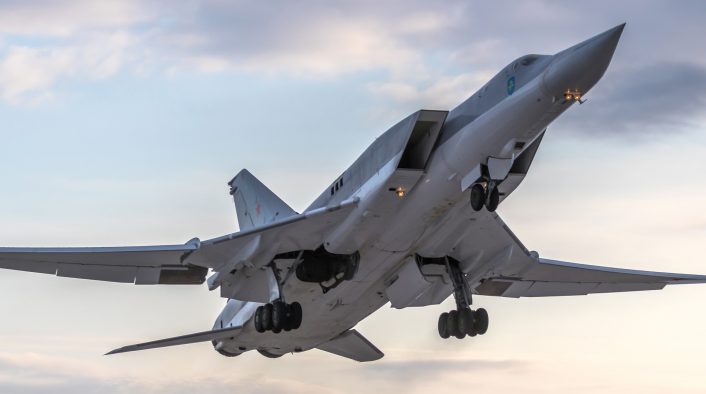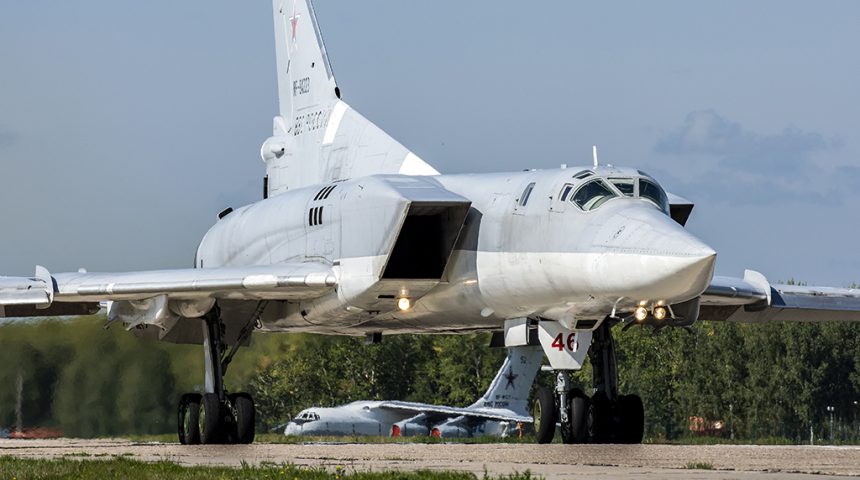The incident occurred as the Russian Air Force Tu-22M3 prepared for a mission at Shaikovka airfield, near Kaluga, Russia.
Three crew members perished in an incident that occurred on Mar. 23, 2021, as the aircrew of a Russian Air Force Tu-22M3 bomber, most probably belonging to the 52nd Guards Heavy Bomber Aviation Regiment, was preparing for take off at Shaikovka, a base located near Kaluga Oblast, in western Russia.
According to the information released by the Russian Defense Ministry, for reasons yet to be determined, crew were ejected during the preflight operations.
Three of them received fatal injuries, as their parachutes did not deploy in time: “The altitude was too low for the parachutes to work, and three crew members have received fatal injuries when they landed,” the Russian MOD said in a statement. Although not mentioned in the official Russia MOD release, according to a source in the medical community of the region who talked to TASS News Agency, one of the crew members survived. He’s currently in the infirmary of the medical unit in Shaikovka. In fact, based on the latest updates, the forced ejection cause three crew members to be ejected according to the standard scheme as the commander of the aircraft, sitting on the left hand seat, leaves the plane on his own. In this case, he did not leave the aircraft.
An alleged preliminary report, possibly leaked online, was posted at the Aviaforum site. Here’s an excerpt translated from Russian:
In preparation for the training flight, after launching the APU and working with the cockpit equipment, Captain, who is the deputy squadron commander, switched on all CB (Circuit Breakers) on the CB panel with the lever of the console.
At the same time, the system of forced departure of the crew was triggered according to the standard scheme (the commander of the aircraft leaves the plane on his own). When the forced exit system was triggered, four canopy door were dropped and three crew members were ejected. The mechanisms of the ejection seats worked normally, the separation of the crew members and the launching of the rescue parachutes took place normally, but due to the lack of conditions for safely leaving the aircraft (speed less than 130 km / h), the parachutes were not filled.
Three crew members were fatally injured when they fell onto the concrete surface of the aircraft parking lot at high vertical speed. Chairs KT-1M. KT-1M is an ejection seat developed by the Tupolev Design Bureau. Currently installed on Tu-22M3 and Tu-22MR aircraft.
Ejection is carried out in the following sequence: operator, navigator, right pilot, commander. Both individual and forced ejection are possible. Forced ejection of the crew is performed by the commander, for which it is enough to lift the cap and turn on the “Forced exit” toggle switch on the left side of the cockpit.
At the same time, a red banner “Forced Leaving” lights up at each workplace and the EMRV-27B-1 time relay is switched on for the seats of the right pilot, navigator-navigator and navigator-operator, which are set for a time corresponding to 3.6 s, 1.8 s , 0.3 s.
After 0.3 s, the time relays trigger the EK-69 pneumatic system solenoid valve on the navigator-operator’s seat, while the “Readiness” system is triggered on the seat (triggering the arms and legs scatter limiters and tightening the harness) and pressing the limit switch for resetting the lantern cover.
When the “Readiness” system is triggered, the ACh-1,2 temporary automatic machine is activated on the seat, which after 1 s pulls out the combat pin of the firing mechanism.
Among the crew members who died in the incident there was also the regiment commander, Colonel Vadim Beloslyudtsev, who was pilot-instructor on the planned flight.

The Tu-22M3’s crew consists of four members. Two pilots seated side-by-side in front (pilot on the left and co-pilot on the right) and the navigator (right) and weapons system officer (left) seated to their rear. All crew members have KT-1M (Kreslo Tupoleva, “Tupolev’s seat”) ejection seats connected within the ASS (automatic rescue system). A minimum speed of 130km/h (81 mph) is required for safe ejection at altitudes below 60m (200ft) according to “Russia’s Warplanes Vol. 2”, by Piotr Butowski (although our sources state that 140km/h is the minimum speed).
The Russian Tupolev Tu-22M3 is a twin-engine supersonic bomber with variable geometry swept wings. The Tu-22M3 and M3M variants are in wide service in Russia, with over 80 reported in flying with the Russian Air Force and more than 40 in use with Russian Naval Aviation as long-range maritime patrol, surveillance and attack aircraft. Indeed, the aircraft was primarily developed as an anti-ship missile carrier for the Soviet/Russian supersonic Kh-22/32 anti-ship missiles with range of up to 1,000 km (621 miles) as well as for smaller Kh-15 missiles with range of up to 300 km (160 miles).
The latest deadly incident involving a Tu-22 occurred on Jan. 22, 2019, when three crew members were killed when the Backfire attempted to land in bad weather at the airfield in Olenegorsk (Murmansk region); a crash that was also caught on camera.









